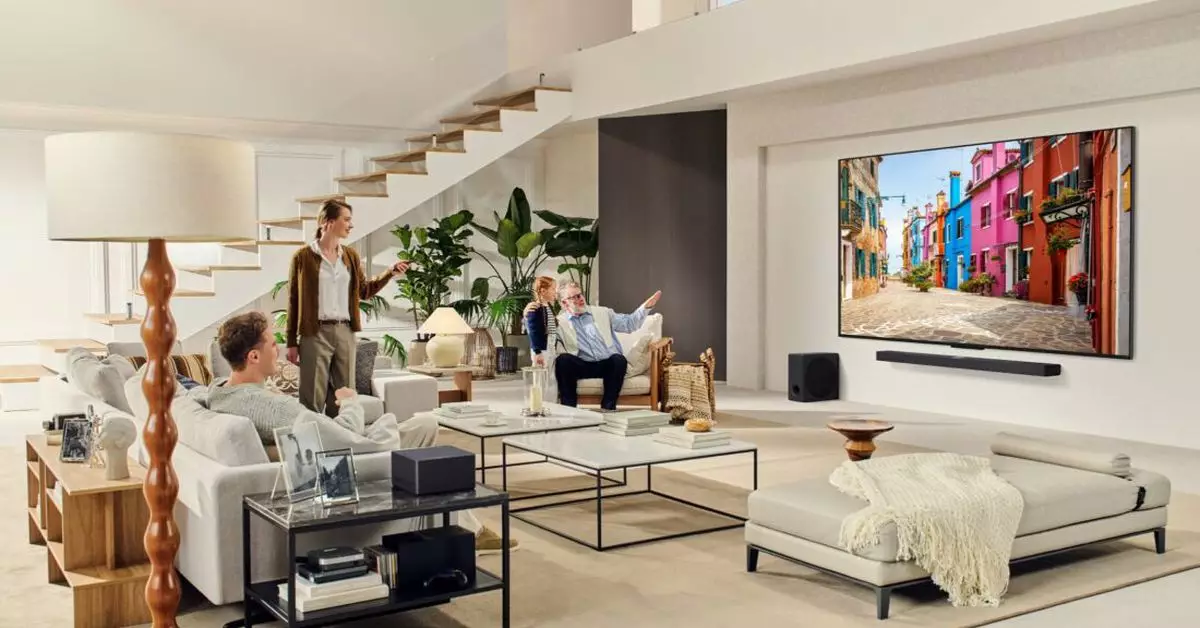As technology continues to evolve at an unprecedented pace, events like the Consumer Electronics Show (CES) showcase groundbreaking innovations that hint at the future of home entertainment. Among the latest advancements making waves is LG’s Zero Connect Box, which debuted alongside the M Series OLED in 2023. This remarkable device represents a significant shift in how we experience television, aiming to streamline our setups by eliminating cumbersome cables while delivering top-notch visuals and audio. By providing a wireless connection that can transmit 4K video at an impressive refresh rate of 144Hz, LG is positioning itself as a leader in innovative, high-performance technology.
LG’s Zero Connect Box marks a significant step forward in creating a cleaner, more aesthetically pleasing living room environment. This device is designed specifically for its QNED Evo Mini LED lineup, which has undergone notable changes this year, particularly in technology and functionality. The exclusivity of this box lies in its ability to power the TV with just a single power cable while wirelessly beaming content, allowing for a tidier setup free of the clutter traditionally associated with home theaters. The proprietary dynamic color technology, named the Dynamic QNED Color Solution, seeks to enhance the viewing experience by offering an array of traditional colors that closely mimic natural sight, elevating realism to a new level.
With CES 2025 on the horizon, a trend is anticipated where Artificial Intelligence (AI) will dominate discussions around TV technology. LG is positioning itself at the forefront of this trend by introducing an AI button on its Magic Remote—a feature that has caused quite a stir in the tech community. Traditional input access has been replaced with AI functionality, aiming to revolutionize how users interact with their televisions. On a short press, this button draws audiences towards tailored content and features. A long press opens the door to a more personalized experience, enabling dialogues such as, “Recommend movies to watch in Paris” during a planned trip to France.
The introduction of AI promises users not just convenience, but advanced improvements such as better upscaling of images, enhanced HDR capabilities, and novel sound output configurations. The potential for AI to manage sound better and differentiate voices from background noise has been a long-standing hurdle for TV makers, and LG appears to be stepping up to challenge that through this innovation. While the hype surrounding AI is palpable, the question remains: is this what consumers genuinely seek in their viewing experience?
With all this cutting-edge technology comes the inevitable speculation about pricing and availability. Historically, CES announcements have revealed dazzling tech but often leave consumers hanging regarding the cost implications. LG has yet to share definitive price points or schedules for the release of the 2025 QNED Evo series, feeding into the cycle of anticipation and uncertainty typical of such high-profile reveals. The gap between the unveiling of exciting technology and the subsequent retail reality can be frustrating for potential buyers eager to adopt the latest innovations.
As consumers navigate the complex landscape of new technology and smart devices, the advancement of products like the LG Zero Connect Box and AI-integrated features can significantly alter home entertainment. Each step forward showcases the commitment of companies like LG to enhance user experience. However, it is crucial for manufacturers to ensure that these technological advancements align with real user needs. Will consumers embrace these shifts in functionality, or will the noise of unnecessary features drown out the genuine enhancements?
LG’s offerings at CES hint at a bold future for home entertainment technology, where reduced clutter and enhanced capabilities can redefine our viewing experiences. While the innovations are exciting, the real test will be their practical application and value in everyday life. As we gear up for CES 2025, the world watches with bated breath to see how these innovations will translate into market-ready products that transform how we interact with our entertainment systems.


Leave a Reply